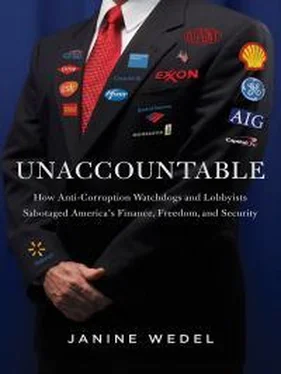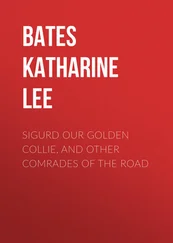More recently, Grassley and others have been targeting the explosive growth of opioid prescriptions, which many public-health experts believe has led to increasing addiction and overdosing, not just alleviating genuine pain. In 2012, he and Senator Max Baucus began investigating opioid makers and their connections to pain experts, including the American Pain Foundation, which shut down as the investigation got under way. 30It was revealed that a full ninety percent of its funding came from opioid producers.
It’s no doubt difficult for desperate activists to say no to drug companies bearing cash, especially in areas where there’s a perceived dearth of government research. And, keep in mind, such donations become even more attractive to vulnerable patients and their supporters. But to most observers, that money is invisible, leaving the impression that patient advocacy groups and professional societies are run by the people they supposedly represent.
Grassroots Billionaires
Now we turn to a case where regular people and even political representatives find themselves in the crossfire between a hedge-fund billionaire betting against a company and the controversial company trying to sustain itself. Both the billionaire and the company have spawned “grassroots” campaigns to create the appearance of a swirl of consumer activity.
The company, Herbalife, which sells nutritional supplements, has been dogged for decades with suggestions that it is little more than a pyramid scheme. Indeed, Herbalife is a so-called multi-level marketing—or MLM—company that relies on recruiting more and more salespeople to stay afloat. But William Ackman’s brazen crusade against the company has actually made it look like a victim.
In a presentation called “Who Wants to Be a Millionaire?” in December 2012, Ackman laid out for an audience of investors some of the reasons he believes Herbalife is a pyramid scheme. 31But the most pertinent fact of the Ackman-versus-Herbalife story is that Ackman was making huge investment bets against Herbalife (which eventually totaled a billion dollars). At least in this respect, Ackman was being very public about his position. 32
Ackman began, as some financial players do, pushing the government to investigate the company, which would likely cause the stock to fall and his bet to pay off. 33He employed both digital-age-enabled “grassroots” strategies and traditional strategies (lobbyists) to achieve his goal. The bevy of lobbyists he hired succeeded in pushing both Representative Linda Sánchez and eventually Senator Edward Markey to call for an investigation. But it’s his grassroots and behind-the-scenes campaign that I’m interested in here.
According to the New York Times , Ackman 34
. . . retained the Dewey Square Group . . . [a] firm that specializes in “grass-roots advocacy,” to influence officials by recruiting surrogates to speak out against Herbalife in emails, tweets, letters or rallies. . . . [L]obbyists and grass-roots organizers set up meetings with major consumer groups.
The focus was on Hispanics and other minorities who might have felt victimized by Herbalife. Through the Dewey Square Group, Ackman underwrote these “grassroots” efforts to the tune of $130,000.
Regulators and politicians began receiving letters from different groups. But the contents? They didn’t differ much. The New York Times found that “All three of the letters from nonprofit groups demanding an investigation were identical—except they were signed by three different Hispanic community leaders, each on a different letterhead.” 35
Some “authors” had no memory of writing a letter. Some nonprofits said, perhaps genuinely or at least plausibly, that they were happy to get involved in rallies and letter-writing because they thought Herbalife was indeed hurting a vulnerable part of their constituency. Ackman, for his part, has been uncharacteristically quiet on the “grassroots” aspect of his advocacy, aside from putting out press releases saying that new nonprofits were coming out against Herbalife. 36
While it’s clear that the Internet was used to create an echo chamber, motives are not easily decipherable unless you know the backstory. There’s a maze of websites attacking Herbalife, one of which is very explicit about its connection to Ackman, and others where the connection is less clear. 37A Facebook page called the Anti-Herbalife Coalition has this post from December 9, 2012: “See the new anti-Herbalife site and SHARE. http://herbalife-scam.com/.” 38The Facebook poster’s name pops up again elsewhere, as the web designer for the site http://www.isherbalifeapyramid.com.
The sites typically feature those who say they were victims of an alleged Herbalife pyramid scheme and encourage anyone with his/her own story to come forward. One of these videos, as the Times points out, was promoted by a New York nonprofit Hispanic advocacy group that received $10,000 from Ackman. 39
One might think from reading thus far that Herbalife itself is a victim, but that is not necessarily the case. Herbalife has signed up its own army of high-wattage lobbyists; in fact, the company far outspent Ackman. 40And a handful of Hispanic groups wrote their own letter—headed “Friends of Herbalife”—with no mention that five out of these seven nonprofits had reportedly received payment from Herbalife. 41The jockeying for at least the appearance of “authentic” support from nonprofits actually—says the Times —created “a bidding war” between Ackman and Herbalife. 42
It’s worth noting, too, that Ackman’s own interests and use of “grassroots” groups have perhaps muted deserved skepticism about a company like Herbalife, which appeals to the economically vulnerable. If Herbalife truly is a pyramid scheme or close to it, would anyone believe it now?
And the nonprofits that took money from Ackman or Herbalife have done themselves damage by not asking enough questions of either party.
One letter-writer interviewed by the Times heard a presentation at church by a former Clinton official well known in the Los Angeles African American community. Less known, apparently, was that she now works for the “grassroots” strategy firm hired by Ackman. Obviously distressed, the letter-writer told the paper, “Have I become an instrument in some billionaire’s investment campaign?” 43
In a word, yes.
“NONPROFIT” POLITICIANS
Thus far we have looked at the “grassroots” shenanigans of the food, beverage, and agribusiness industry; the nuclear-power industry; pharmaceutical and medical-device companies; and an individual hedge-fund billionaire. This is just a tiny sample of the financial and corporate players who have organized influence through faux-grassroots campaigns.
Now we turn to political parties who use “nonprofits” to both push their message unimpeded by reporters and to obscure donors with deep pockets.
You have likely heard about the 2013 scandal that rocked the Internal Revenue Service, the U.S. agency accused of inappropriately targeting certain groups that organize themselves as 501(c)(4) social welfare nonprofits, when they might be more accurately characterized as advocacy groups. Despite the focus on “conservative” groups, they are not the only ones that have rushed to create these nonprofit sinkholes of stealth influence; “liberal” groups have as well, even if they do appear to be playing a bit of catchup. These nonprofits (sometimes aligned with a Super PAC group) tend to cloak themselves in the aura of “grassroots support.” The 501(c)(4)s, unlike Super PACs, have the huge benefit of not having to disclose their donors.
Public watchdogs made much of the 2010 Supreme Court ruling in the Citizens United case that fully legalized corporate donations to political campaigns, fearing they would skyrocket. And yet it hasn’t happened. Nine months later, as the New York Times reported, “Corporations have so far mostly chosen not to take advantage of the Citizens United ruling to directly [emphasis added] sponsor campaign ads themselves.” 44In 2014, OpenSecrets.org analyzed it thusly: 45
Читать дальше












